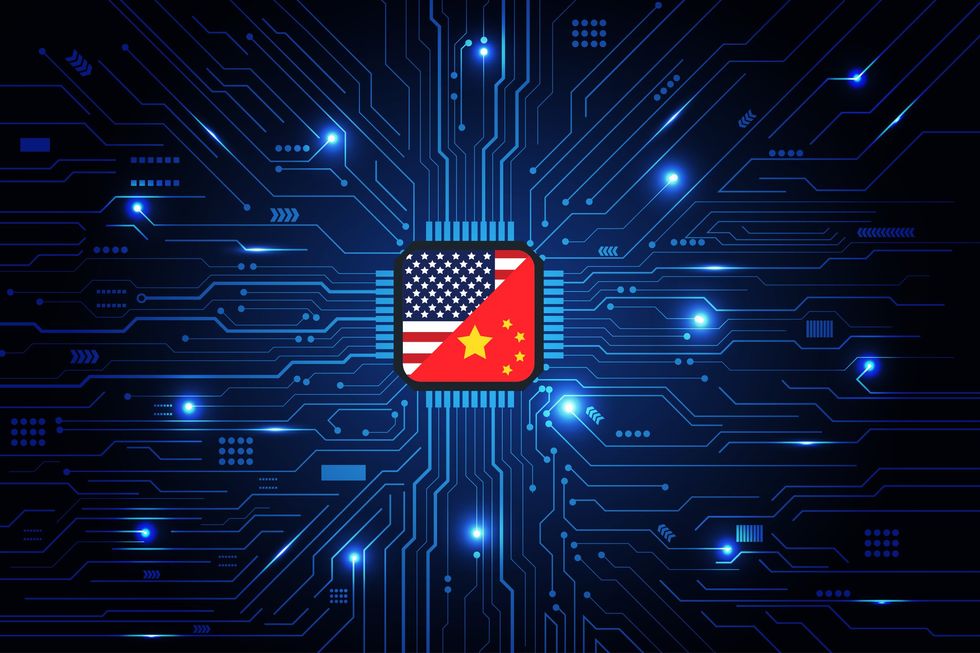America First energy policy will be key to beating China in the AI race


The world is on the verge of a technological revolution unlike anything we’ve ever seen. Artificial intelligence is a defining force that will shape military power, economic growth, the future of medicine, surveillance, and the global balance of freedom versus authoritarianism — and whoever leads in AI will set the rules for the 21st century.
Live Your Best Retirement
Fun • Funds • Fitness • Freedom
The stakes could not be higher. And yet while America debates regulations and climate policy, China is already racing ahead, fueled by energy abundance.
Energy abundance must be understood as a core national policy imperative — not just as a side issue for environmental debates.
When people talk about China’s strategy in the AI race, they usually point to state subsidies and investments. China’s command-economy structure allows the Chinese Communist Party to control the direction of the country’s production. For example, in recent years, the CCP has poured billions of dollars into quantum computing.
China’s energy edge
But another, more important story is at play: China is powering its AI push with a historic surge in energy production.
China has been constructing new coal plants at a staggering speed, accounting for 95% of new coal plants built worldwide in 2023. China just recently broke ground on what is being dubbed the “world’s largest hydropower dam.” These and other energy projects have resulted in massive growth in energy production in China in the past few decades. In fact, production climbed from 1,356 terawatt hours in 2000 to an incredible 10,073 terawatt hours in 2024.
Beijing understands what too many American policymakers ignore: Modern economies and advanced AI models are energy monsters. Training cutting-edge systems requires millions of kilowatt hours of power. Keeping AI running at scale demands a resilient and reliable grid.
China isn’t wringing its hands about carbon targets or ESG metrics. It’s doing what great powers do when they intend to dominate: They make sure nothing — especially energy scarcity — stands in their way.
America’s self-inflicted weakness
Meanwhile, in America, most of our leaders have embraced climate alarmism over common sense. We’ve strangled coal, stalled nuclear, and made it nearly impossible to build new power infrastructure. Subsidized green schemes may win applause at Davos, but they don’t keep the lights on. And they certainly can’t fuel the data centers that AI requires.
The demand for energy from the AI industry shows no sign of slowing. Developers are already bypassing traditional utilities to build their own power plants, a sign of just how immense the pressure on the grid has become. That demand is also driving up energy costs for everyday citizens who now compete with data centers for electricity.
Sam Altman, CEO of OpenAI, has even spoken of plans to spend “trillions” on new data center construction. Morgan Stanley projects that global investment in AI-related infrastructure could reach $3 trillion by 2028.
Already, grid instability is a growing problem. Blackouts, brownouts, and soaring electricity prices are becoming a feature of American life. Now imagine layering the immense demand of AI on top of a fragile system designed to appease activists rather than strengthen a nation.
In the AI age, a weak grid equals a weak country. And weakness is something that authoritarian rivals like Beijing are counting on.
Time to hit the accelerator
Donald Trump has already done a tremendous amount of work to reorient America toward energy dominance. In the first days of his administration, he released detailed plans explicitly focused on “unleashing American energy,” signaling that the message is being taken seriously at the highest levels.
Over the past several months, Trump has signed numerous executive orders to bolster domestic energy production and end subsidies for unreliable energy sources. Most recently, the Environmental Protection Agency has moved to rescind the Endangerment Finding — a potentially massive blow to the climate agenda that has hamstrung energy production in the United States since the Obama administration.
These steps deserve a lot of credit and support. However, for America to remain competitive in the AI race, we must not only continue this momentum but ramp it up wherever possible. Energy abundance must be understood as a core national policy imperative — not just as a side issue for environmental debates.
RELATED: MAGA meets the machine: Trump goes all in on AI
 Photo by Grafissimo via Getty Images
Photo by Grafissimo via Getty Images
Silicon Valley cannot out-innovate a blackout. However, Americans can’t code their way around an empty power plant. If China has both the AI models and the energy muscle to run them, while America ties itself in regulatory knots, the future belongs to China.
Liberty on the line
This is about more than technology. This is about the world we want to live in. An authoritarian China, armed with both AI supremacy and energy dominance, would have the power to bend the global order toward censorship, surveillance, and control.
If we want America to lead the future of artificial intelligence, then we must act now. The AI race cannot be won by Silicon Valley alone. It will be won only if America moves full speed ahead with abundant domestic energy production, climate realism, and universal access to affordable and reliable energy for all.
Originally Published at Daily Wire, Daily Signal, or The Blaze
What's Your Reaction?
 Like
0
Like
0
 Dislike
0
Dislike
0
 Love
0
Love
0
 Funny
0
Funny
0
 Angry
0
Angry
0
 Sad
0
Sad
0
 Wow
0
Wow
0








































































